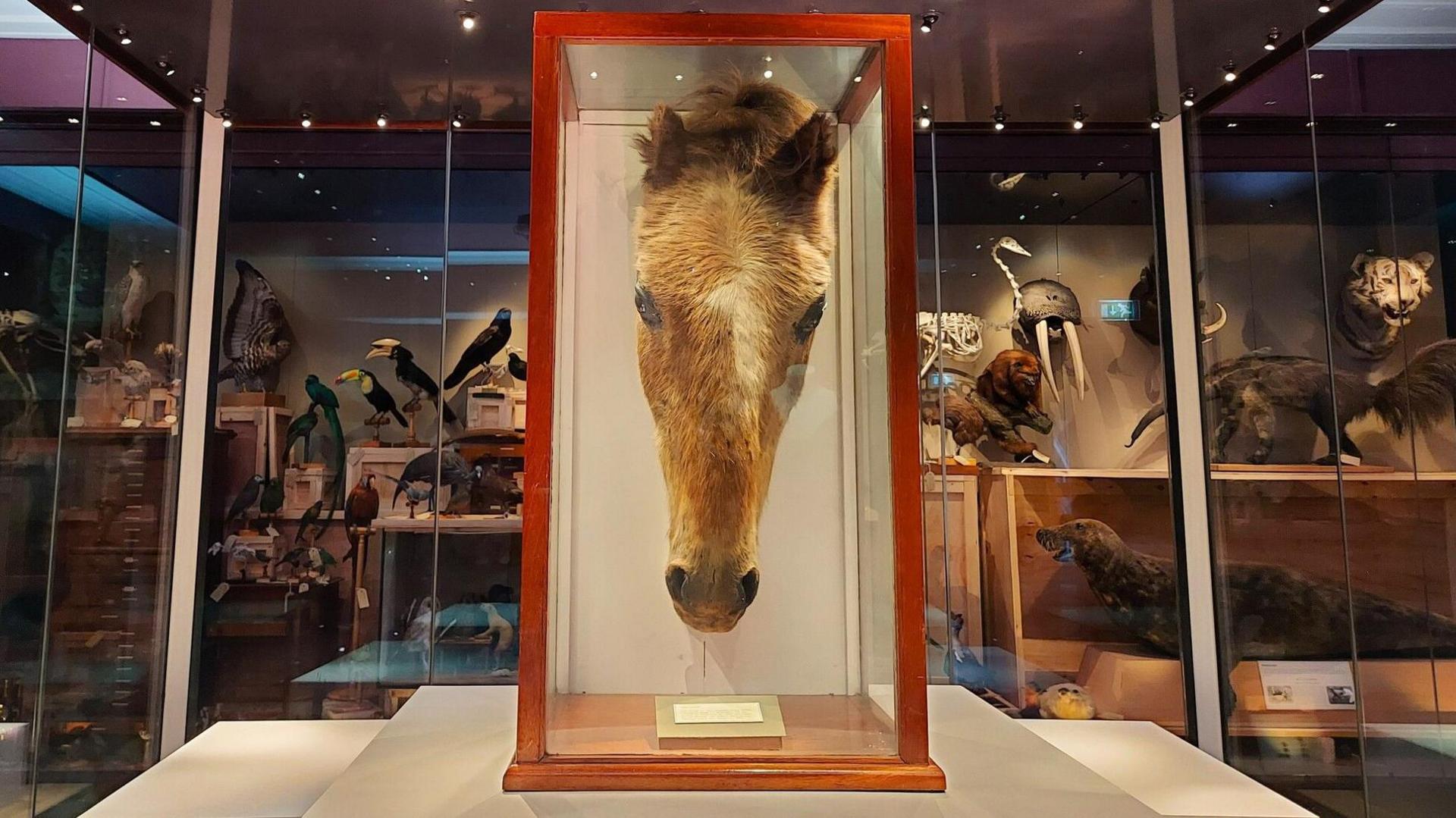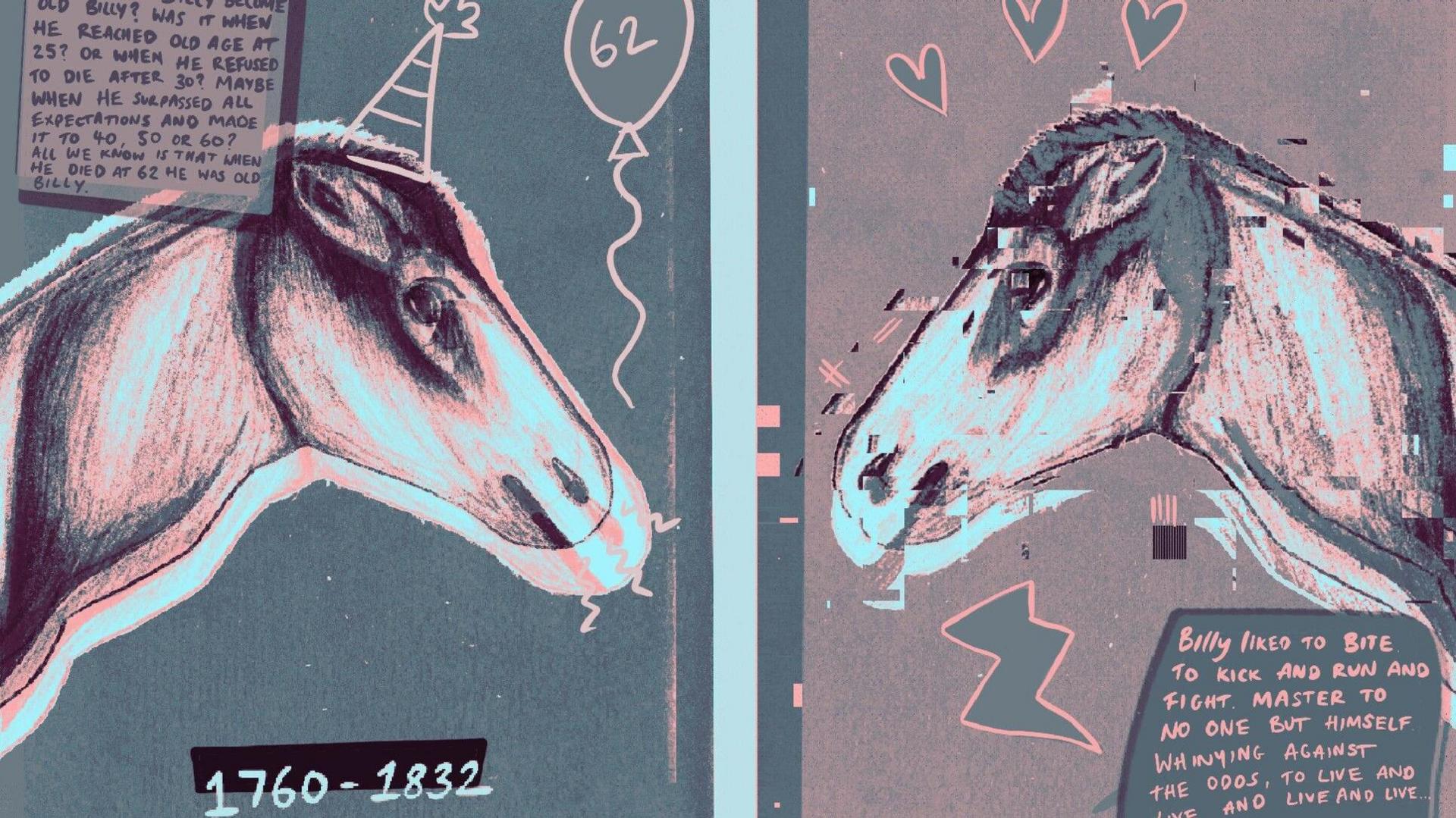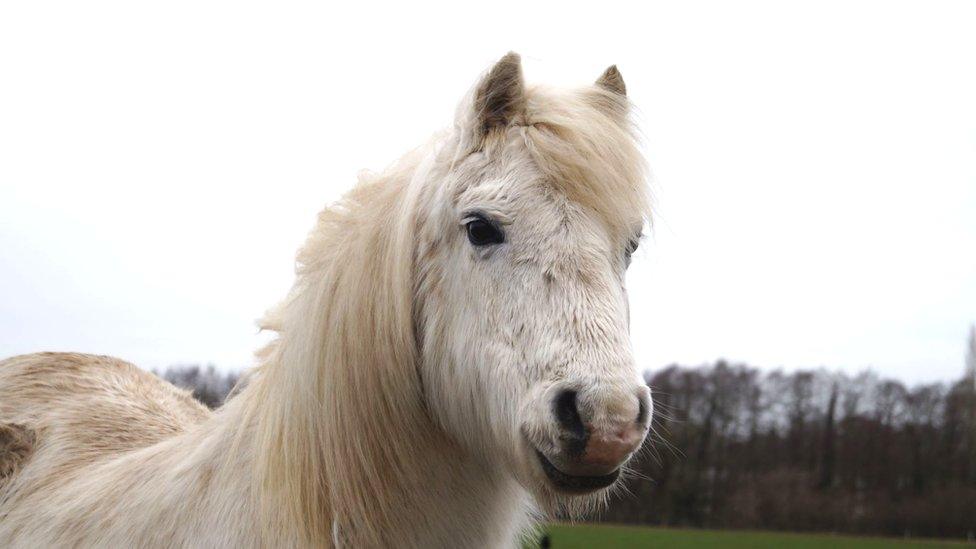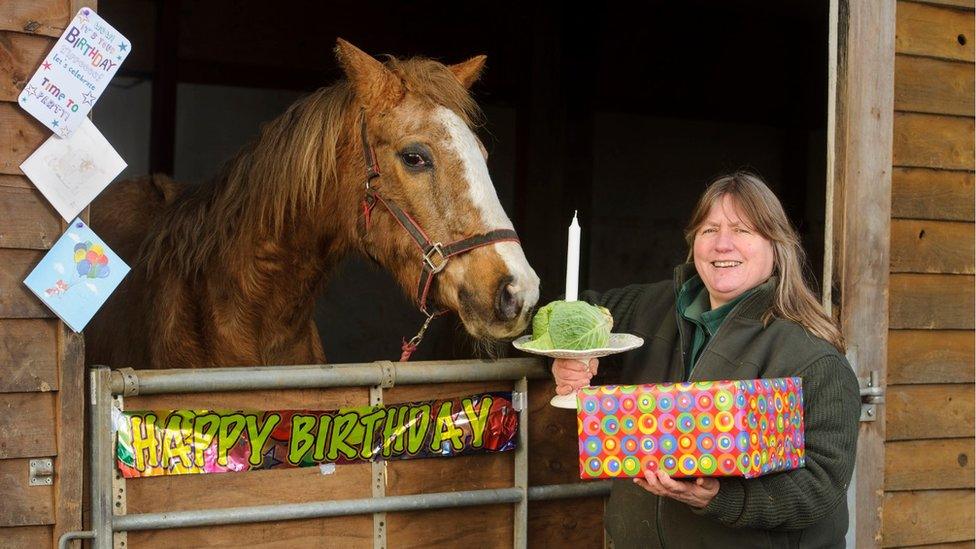Head of world's oldest horse returns to hometown

Old Billy's head has been held by Bedford Museum for many years
- Published
The head of the world's oldest horse has been returned to its hometown after a team of artists campaigned to bring it back for a festival.
Old Billy was foaled at a farm in Woolston, near Warrington, in 1760 and spent almost six decades powering machinery and pulling boats on the River Mersey.
The workhorse died in 1822 at the age of 62 and its taxidermied head found its way to Bedford Museum, where it has resided ever since.
Hayley Reid, who has led the project to bring it to Warrington Arts Festival, said Billy's "cultural significance" deserved to be "celebrated" in the town.
Ms Reid, who hails from Woolston, said the Bring Back Old Billy Committee "can't wait to see" the horse's remains back in the town.
"Some of the members of the committee, like me, are from where Billy was born and we’ve got family and friends who haven't even heard of him," she said.
"Given his cultural significance to Warrington as the oldest horse that ever lived that's so surprising – and sad – because he should continue to be celebrated."
'Captured our imaginations'
A Culture Warrington representative said Billy was foaled at Wilgreave Farm in Woolston in 1760 and was originally taught to plough.
In 1763, Mersey and Irwell Navigation Company bought Billy and used the horse to "lift heavy loads into and out of boats and pull other horse-powered machinery", they said.
They said Billy became "renowned for his stamina, as well as his volatile temper when he was hungry" and worked for the company "pulling boats from 1793 until his retirement in 1819".
Billy's renown meant the horse later took part in Manchester's celebrations of King George IV's coronation.
The representative added Billy's fame meant the retired horse received "regular visitors" until its death in 1822, which was "very unusual at the time as in the early 19th Century, people were largely unsentimental about animals".

The return of Old Billy's head has inspired artworks
Several likenesses were painted around the time of Billy's death, with one now being held in Warrington Museum and Art Gallery's collection, and the horse's head was split into two.
The taxidermied head was acquired by Bedford Museum, while Old Billy's skull went to Manchester Museum, where it has been displayed below a neon sign bearing the horse's name.
Such has been Old Billy's enduring appeal that a children's book telling the horse's story was published in 2023 and Ms Reid said it was hoped the return of the head would inspire other work.
"There’s something about Old Billy which has really captured our imaginations," she said.
"We loved the beautiful children's picture book about him which was recently created by two artists from the town [and] now there's music and artwork being made about Old Billy and we'll be hosting workshops and talks."
Old Billy is at Warrington Museum's Cabinet of Curiosities between 19 July and 20 November and is free to view.
Listen to the best of BBC Radio Manchester on Sounds and follow BBC Manchester on Facebook, external, X, external, and Instagram, external. You can also send story ideas to northwest.newsonline@bbc.co.uk, external
Related topics
- Published19 March 2024

- Published9 October 2015
